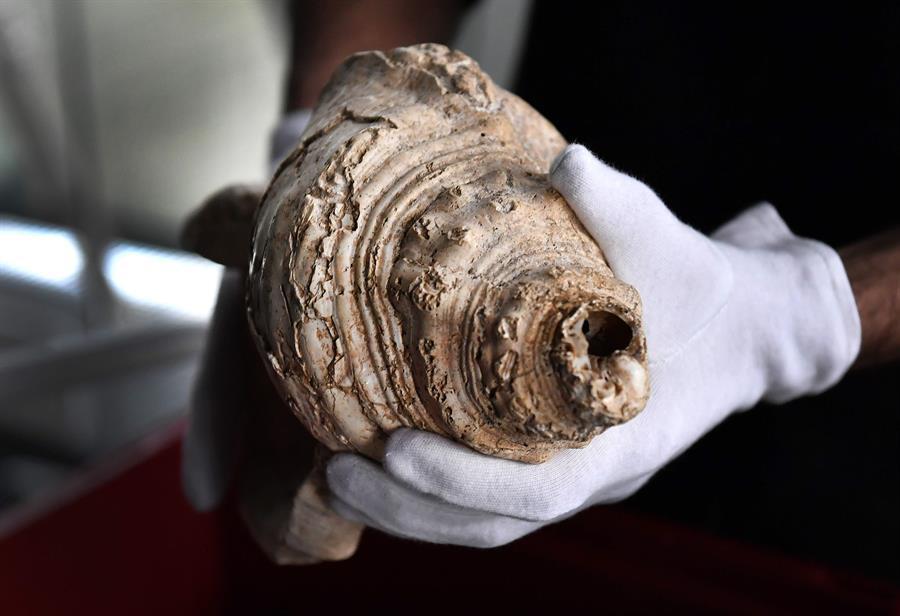
After more than 17,000 years of silence and decades forgotten in a French museum, a shell fashioned into a horn by our prehistoric ancestors has been played again as a result of new research published Feb. 10.
Scientists believe the ancient conch, from a species of large sea snail still present in the Atlantic and North Sea, is the oldest wind instrument of its type yet found.
The shell was unearthed in 1931 at an archaeological dig in the Pyrenees near the mouth of the Marsoulas Cave, whose walls are painted with the artwork of Magdalenian people living there at the end of the last ice age. Scientists initially thought it bore no trace of human modification, assuming it was a type of ceremonial drinking cup.
It was taken to the Museum of Natural History in Toulouse and forgotten. But a new examination using modern technology found not only that it had been altered, but that it could still hold a note.
Or three, as it turned out.
Played by a musician, it had tones close to C, C sharp and D. And it boomed at a resounding 100 decibels a metre from the conch.
“This sound is a link, a direct link with Magdalenian people,” said Carole Fritz, lead author of the study and a senior scientist at the French National Centre for Scientific Research.
She said it was “very important because you have the sea in the cave”, adding the shell was from the Atlantic, some 200 kilometers from the cave.
Instruments older than the conch have been found - flutes whittled from the bones of large birds like swans and eagles - but the researchers said this was the oldest shell horn, symbolising the importance of the ocean to Magdalenian people.
The study, published in Science Advances, said radio-carbon dating of items at the cave suggest it was occupied around 18,000 years ago.
“To our knowledge, the Marsoulas shell is unique in the prehistoric context, not only in France but also at the scale of Paleolithic Europe and perhaps the world,” the study said.
One clue to the shell’s importance was its markings. Painted red dots the size and shape of fingerprints are similar to those used to depict bison on the cave wall.
When the shell was discovered in the 1930s, scientists likely assumed its broken tip - leaving a 3.5 cm diameter opening -- was due to accidental damage, said co-author Gilles Tosello, researcher at the center for prehistoric art at Toulouse University. But this is the strongest part of the shell and is “almost impossible” to break naturally, he said.
On closer inspection, researchers found the shell had been carefully modified with an “elaborated technique,” with a CT scan revealing two holes that they think were drilled to install a mouthpiece.